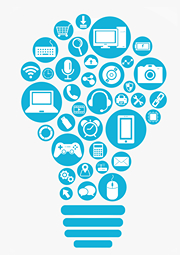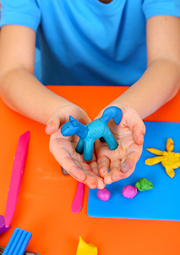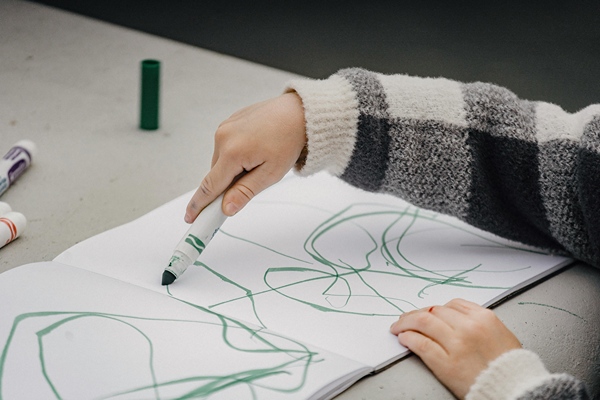Crafting Effective Digital Study Groups: Leveraging Technology for Enhanced Learning
Remember when “study group” meant huddling around a library table surrounded by stacks of textbooks and coffee cups? Those days aren’t gone, but they’ve certainly evolved. Technology has woven itself into the fabric of education, transforming how students learn and collaborate.
Today, with a few clicks, students can join forces from anywhere in the world and form digital study groups that are not only convenient but often more effective. These groups offer students a flexible, accessible way to connect with peers and tackle challenging material together.
But how do you make these online study sessions truly effective? Below, we’ll look at the platforms and tools that make these groups work, explore strategies for organizing productive sessions, and share tips for keeping everyone engaged and accountable.
The Benefits of Digital Study Groups
Ten years ago, joining a study group meant rearranging your entire schedule and trekking across campus. Today, digital study groups have turned that notion on its head, offering a bevy of advantages that make collaborative learning more accessible and enriching than ever before.
Enhanced Accessibility
With digital study groups, students’ learning companions aren’t limited to whoever happens to be in their dorm or neighborhood. That classmate who moved to another state? They’re just a click away. This level of accessibility allows students to work around their own schedules, making participation easier for those juggling multiple commitments.
Exposure to Diverse Perspectives
Imagine a student discussing literature with a peer from Tokyo or solving math problems alongside a student in Cape Town. Digital study groups open students to a world of diverse perspectives in a very literal sense.
This exposure to different viewpoints and problem-solving approaches doesn’t just enhance their understanding of the subject matter; it broadens their horizons and prepares them for the increasingly globalized world of the future.
Flexibility and Convenience
Digital platforms allow for both synchronous (real-time) and asynchronous participation, meaning students can contribute to discussions or work on shared projects when it fits their schedule. This flexibility is a game-changer for those juggling multiple commitments, employment, or dealing with unpredictable schedules.
Choosing the Right Platforms for Virtual Study Groups
When setting up a digital study group, choosing the right platform can make or break the virtual learning experience. Thankfully, there are various platforms available, each with its own strengths.
Zoom, Google Meet (part of Google Workspace for Education), and Microsoft Teams are popular choices for video conferencing. These platforms offer features like screen sharing, chat, and breakout rooms for smaller group discussions, making it easy to recreate the feel of an in-person study session.
In addition to video conferencing, collaborative tools like Google Docs, Notion, and Miro are invaluable for group study.
Google Docs allows for real-time editing of shared documents, making it perfect for group notes or collaborative assignments. Notion provides an all-in-one workspace for organizing notes, tasks, and schedules, while Miro is ideal for visual learners who prefer brainstorming on digital whiteboards.
When selecting platforms for your study group, here are the key features you should consider:
- Ease of use: If students need a computer science degree to figure it out, it’s probably not the right fit. Look for intuitive interfaces that won’t distract from actual studying.
- File sharing: It’s crucial to be able to quickly share notes, slides, or resources.
- Breakout rooms: These are great for splitting into smaller groups for focused discussions or problem-solving sessions.
- Recording capabilities: Being able to record sessions for those who couldn’t make it (or for review) is super helpful.
- Whiteboard or screen sharing: These features are essential for explaining complex concepts or working through problems together.
Remember, there’s no one-size-fits-all solution. Don’t be afraid to experiment with different tools until you find the perfect digital ecosystem for your study group.
Organizing Effective Digital Study Sessions
Without a clear game plan, even the most well-intentioned study group can devolve into a chat fest or a productivity black hole. The key to making your digital study sessions truly effective lies in smart organization.
Set Clear Goals and Expectations
To make the most out of digital study groups, it’s essential to set clear learning objectives from the start. Each group member should understand the purpose of the sessions, whether it’s preparing for an exam, working on a project, or simply reinforcing course material.
Defining these goals helps keep everyone focused and ensures that the group remains productive.
Create a Structured Schedule
A structured schedule is equally important. Regularly scheduled meetings and clear deadlines prevent procrastination and help the group stay on track.
Whether it’s weekly check-ins or more frequent study sessions, having a plan in place creates a sense of commitment and consistency among members.
Assign Roles and Tasks for Group Members
To foster accountability, it’s helpful to assign specific roles or tasks to each group member. One person might take on note-taking, while another leads the discussion or keeps track of progress.
This division of labor not only helps the group run more smoothly but also ensures that everyone contributes equally. Rotate these roles regularly to keep things fresh and ensure everyone gets a chance to develop different skills.
Time Management
Finally, effective time management techniques are crucial for maximizing productivity during study sessions. Using tools like timers to break sessions into focused intervals (often called the Pomodoro Technique) or establishing time limits for discussion points can help keep the group on task and avoid wasting time.
Tips for Maintaining Engagement and Accountability
Staying focused during a digital study session can sometimes feel like trying to herd cats. The allure of social media notifications, the comfort of the couch, or the temptation to multitask can all conspire against students’ best intentions. Fortunately, there are several strategies you can use to help the group stay on track.
Have Regular Check-Ins
These can be as simple as a quick status update at the start of each session or scheduled progress reports between meetings.
What has everyone accomplished since the last meeting? What roadblocks have they hit? This not only helps everyone stay accountable but also fosters a sense of shared progress.
Gamify and Encourage Active Participation
Incorporating gamification elements can also boost engagement. Simple techniques like setting up challenges, creating friendly competitions, or rewarding group achievements can make study sessions more fun and motivating.
Make it a group norm to have cameras on when possible – it helps create a sense of presence and makes non-verbal communication possible. Use features like hand-raising or reactions to make participation easy and engaging.
Try the “popcorn” method for discussions: after someone speaks, they choose the next person to contribute. This keeps everyone on their toes and ensures no one dominates the conversation.
Diversify Activities
To keep sessions engaging and productive, consider incorporating a variety of activities that go beyond traditional studying methods. Making those same sessions focused on practical matters also tends to make for engaging studying.
To use just a couple of examples, organizing mock interviews to prepare for job applications, dedicating time to peer resume reviews with a focus on formatting ATS-friendly resumes, or creating subject-specific quizzes to make learning more interactive is bound to evoke more interest from your students than a regular, run-of-the-mill class.
By rotating through these diverse activities, you can keep your digital study sessions fresh and engaging while developing skills that are valuable both academically and professionally.
Set and Track Group Progress
Finally, setting and tracking group progress can also ensure accountability. Tools like shared task lists or tracking apps allow the group to monitor how well they’re meeting their goals. Visualizing progress can be incredibly motivating and help keep the group accountable as everyone works toward the same objectives.
Wrapping Up
Digital study groups aren’t just a convenient alternative to in-person sessions; they’re a powerful tool that can supercharge students’ learning. They combine the best of both worlds – the flexibility and resources of virtual learning with the time-tested benefits of collaborative learning.
By choosing the right platforms, setting clear goals, and staying engaged, students can take full advantage of these virtual spaces to improve their study habits and outcomes. The ability to connect with peers, share insights, and learn from different perspectives enriches the educational experience in ways traditional methods can’t always provide.
About the Author:
Ryan Harris is a copywriter focused on eLearning and the digital transitions going on in the education realm. Before turning to writing full time, Ryan worked for five years as a teacher in Tulsa and then spent six years overseeing product development at many successful Edtech companies, including 2U, EPAM, and NovoEd.











